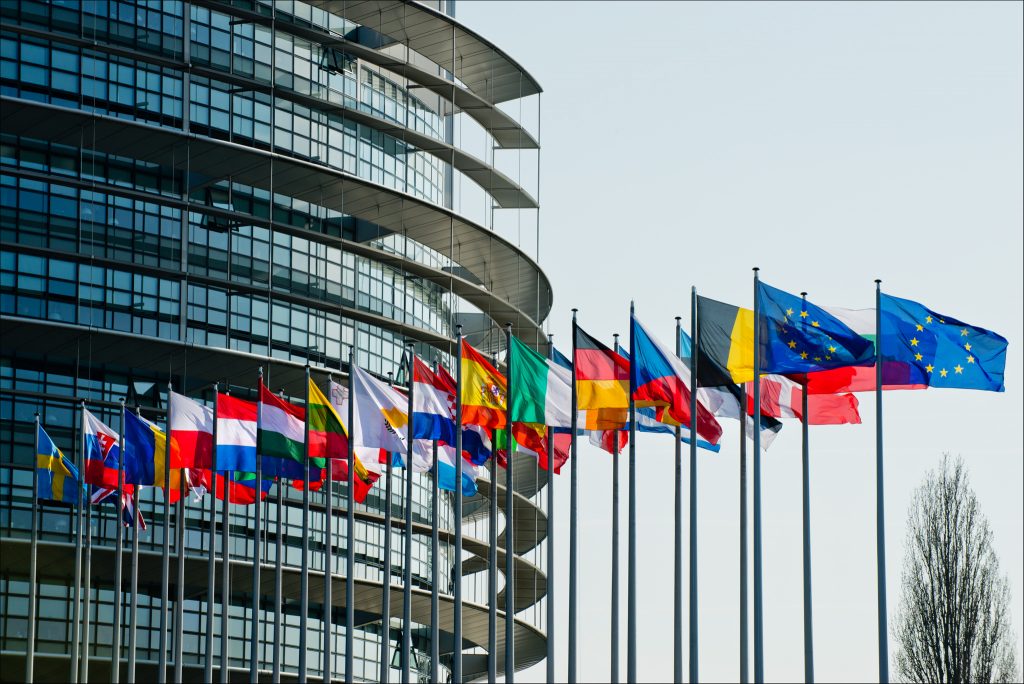
Valuing Cycling in the European Parliament: How to address the €80 billion cost of physical inactivity?
The epidemic of physical inactivity was the main topic of discussion at the Sport intergroup conference in the European Parliament (EP) last week. Its €80 billion cost, first raised by Marisa Fernandez Esteban of the EU Sport Unit was repeated over and over. ECF’s response to this public health crisis is the EU Cycling Strategy, with its 2030 aims to increase cycling by 50%, reduce cycling fatalities by 50%, thereby adding 225,000 jobs and 250 billion euros to the cycling economy. “If every EU citizen did just 15 minutes more of cycling or walking each day, we’d save 100,000 lives from unnecessary early deaths each year,” said ECF health policy officer Dr. Randy Rzewnicki. “Walking and cycling is the best buy for EU cities and towns,” he said, “We’re working closely with the World Health Organization (WHO) to make that message clear in many ways: including free training in the Health Economic Assessment Tool (HEAT) and supporting the Global Action Plan on Physical Activity (GAPPA).”
“Physical activity is very important for the health and well-being of EU citizens” stated MEP Bogdan Wenta, Vice-President of the Sport Intergroup. “The focus of the EU Week of Sport is healthy Lifestyles,”echoed Marisa Fernandez Esteban of the EU Sport Unit. “Doing nothing costs €80 billion to the EU.” However, what is very clear is that working in individual policy silos, such as Sport or Education is not enough. And only working at the local or regional level is also insufficient. Plans to increase levels of physical activity “will only work if the work is done by ALL sectors, from public administration to civil society” said Fernandez Esteban.
“There is no way we can do it alone. We need to have cross-sector partnerships, both in the public and private sector.”said Maxime Leblanc of Sports and Citizenship. “Our focus is inactivity. But most local decision makers don’t know about this problem” and their role in solving it,”he added.
“This is not a new problem. 10 years ago it was recommended that in schools children should have more sports and physical activity. But we are seeing that schools reducing these hours.” Said Professor Dr Marcella Gonzalez-Gross from the Universidad Politecnica de Madrid. MEP Wenta concurred, “It’s very important to have quality PE lessons.”
“Today’s kids will be the least active generation,“ said Dan Burrows from Nike. “One third of kids are not meeting even the minimum standards recommended by WHO.” Dr Richard Bailey from ICSSPE confirmed the research showing “this is the first generation of kids that will be less active than adults.” He cited new data showing the ‘drop off cliff’ of ages when kids stop doing relatively high levels of physical activity “has moved back over the last decades. It used to be 18 years, when kids started being inactive, Then it was about 12-13. Now we’re seeing kids stop doing PA at 6 year old. Which is starting school.”
Other new data is confirming the benefits. Higher levels of physical activity, both recreational and non-recreational, was associated with lower risk of mortality and cardiovascular diseases (CVD) according to research conducted in 17 countries and published last month in the Lancet (Lear ea 2017)
Turn the tide of physical inactivity
“We are committed to turn the tide of physical inactivity, with it’s tremendous health care costs, lost work days to business” said Sir Graham Watson, president of EuropeActive, representing the European health and fitness sector. “Let’s not call it the “week of sport”, he said. “Call it Be Active.”
After the session, ECF presented a “Cyclelogistics” wooden cargo bike to one of the organisers, MEP Santiago Fisas. “It’s symbolic of the potential for cycling in our cities, said ECF’s Rzewnicki, handing it to the MEP. Estimates from the Cyclelogistics project are that 25% of commercial delivery trips could be replaced with bikes and cargobikes. And 50% of all logistics trips in EU cities now done by motor vehicles could be replaced with bikes and cargobikes.
Reference:
Lear et al 2017 The effect of physical activity on mortality and cardiovascular disease in 130 000 people from 17 high-income, middle-income, and low-income countries: the PURE study. http://dx.doi.org/10.1016/S0140-6736(17)31634-3
#BeActive, #Activetransport, #Activecommuting, #BikeToWork, #BikeToSchool, #BikeToShop, #EP, #European, #EuropeanParliament, #lobbying
Regions:
Contact the author
Recent news!
Upcoming events
Contact Us
Avenue des Arts, 7-8
Postal address: Rue de la Charité, 22
1210 Brussels, Belgium









